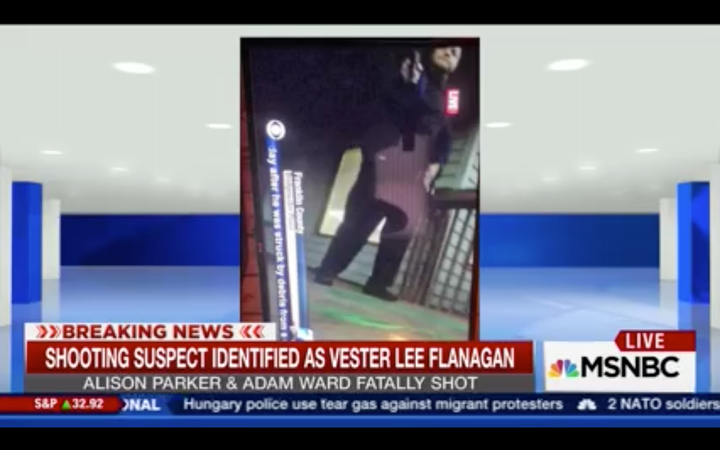When footage of violence streams in from Iraq or photos of mass graves from Mexico’s drug war end up on an editor’s desk, news organizations are often placed in the difficult position of deciding how much disturbing material they should broadcast to their audience.
Wednesday’s shooting in Virginia -- which left an anchor and photographer from local television news station WDBJ dead -- offered a case in point. Footage of the attack was captured live on air by the station itself and by the killer, who recorded the shooting and posted video on social media. The different ways the major TV networks have chosen to handle both pieces of footage shows there’s not necessarily a firm rule dictating when media outlets censor graphic material or pass it along. Most often, news organizations play it by ear, balancing the public’s need to know with the obligation not to spread trauma.
On CNN, anchor Carol Costello warned viewers before airing a live video clip of the attack, initially saying the network would only play the clip once. “I want to warn you if you find these kinds of things disturbing, please leave the room,” Costello said.
The CNN host later clarified that the network would only play the clip once per hour.

MSNBC generally freeze-frames footage before material gets violent, a spokesperson said.
A spokesperson for MSNBC said the network generally refrains from showing graphic video, opting instead to freeze-frame before the material gets violent. On its digital platforms, the organization allows only the first gunshot to be heard, then mutes the audio. The material also comes with a disclaimer warning of “graphic or disturbing content.”
As of Wednesday evening, Fox News was not showing footage of the shooting, though the network was running still images of the shooter. A Fox News spokeswoman said the decision not to show the footage would continue to be evaluated as the story progressed.
ABC is showing portions of the Virginia shooting video, but stopping the tape before shots ring out. “It’s similar to what we do with the South Carolina shooting,” a source at the network said. “You show parts but not the actual moment out of respect.”
Dan Abrams, chief legal correspondent at ABC News, laid out the network's policy on the video in a series of tweets. The anchor said ABC would air parts of the footage up until the actual shooting.
The question that lingers in the background of these decisions is whether showing the graphic content in full does, in fact, serve the public interest. What if watching disturbing material helps shock citizens into action?
Journalists openly discussed on Twitter the ethics of transmitting the videos, which Columbia Journalism Review rounded up on its website. At National Review, Jim Geraghty laid out the case for presenting the video to the public, arguing that, perhaps, we "owe it to the victims to not avert our eyes":
But I feel like there’s at least one compelling reason to show the video: this is the actual truth of what happened. The job of journalists is to inform the public of what happened. One of our great complaints about modern media is that it feels a paternalistic need to emphasize certain aspects and obscure others, often in service of a particular narrative, no?
Abrams, on the other hand, expressed how he felt about this rationale:
At The New Republic, Jeet Heer said there was good reason for the "taboo" against circulating images of killings. "Showing and viewing such images is disrespectful of the dead and also painful to their loved ones," he said.
"The moment of death, especially if it comes about in the terrifying form of murder, is deeply traumatic," Heer added.
Editors here at The Huffington Post decided to use an edited version of the footage that opens with a warning, mutes the audio and blurs the footage when the shooting begins.
If anyone wants to review the clip, it appears at the bottom of this article.

